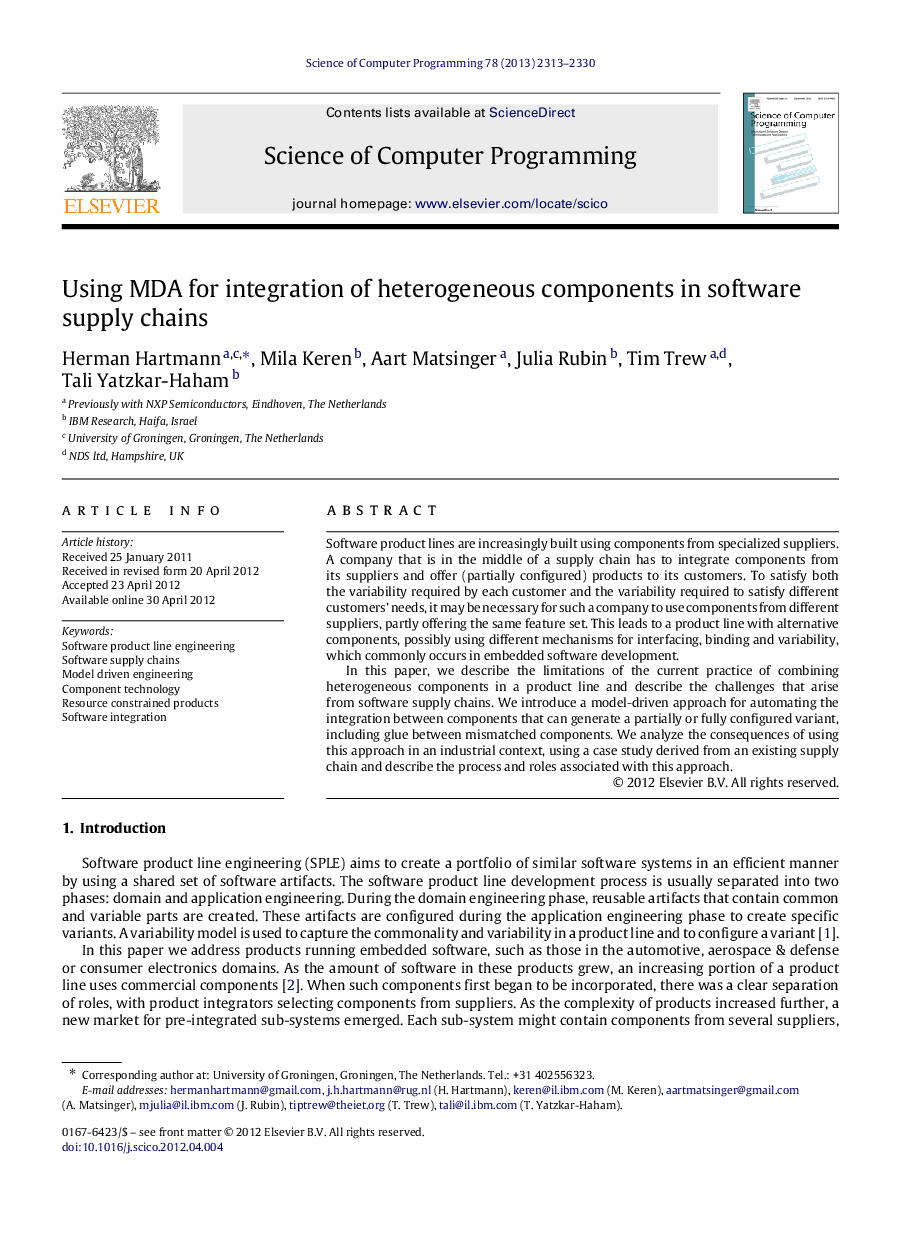| Article ID | Journal | Published Year | Pages | File Type |
|---|---|---|---|---|
| 435071 | Science of Computer Programming | 2013 | 18 Pages |
Software product lines are increasingly built using components from specialized suppliers. A company that is in the middle of a supply chain has to integrate components from its suppliers and offer (partially configured) products to its customers. To satisfy both the variability required by each customer and the variability required to satisfy different customers’ needs, it may be necessary for such a company to use components from different suppliers, partly offering the same feature set. This leads to a product line with alternative components, possibly using different mechanisms for interfacing, binding and variability, which commonly occurs in embedded software development.In this paper, we describe the limitations of the current practice of combining heterogeneous components in a product line and describe the challenges that arise from software supply chains. We introduce a model-driven approach for automating the integration between components that can generate a partially or fully configured variant, including glue between mismatched components. We analyze the consequences of using this approach in an industrial context, using a case study derived from an existing supply chain and describe the process and roles associated with this approach.
► We identify the limitations of current practice of combining heterogeneous components. ► A model-driven approach for generating glue components is introduced. ► The glue components are generated only when they are required. ► The skills required for this approach are localized in the organization. ► The approach is exercised using a case study from an existing supply chain.
